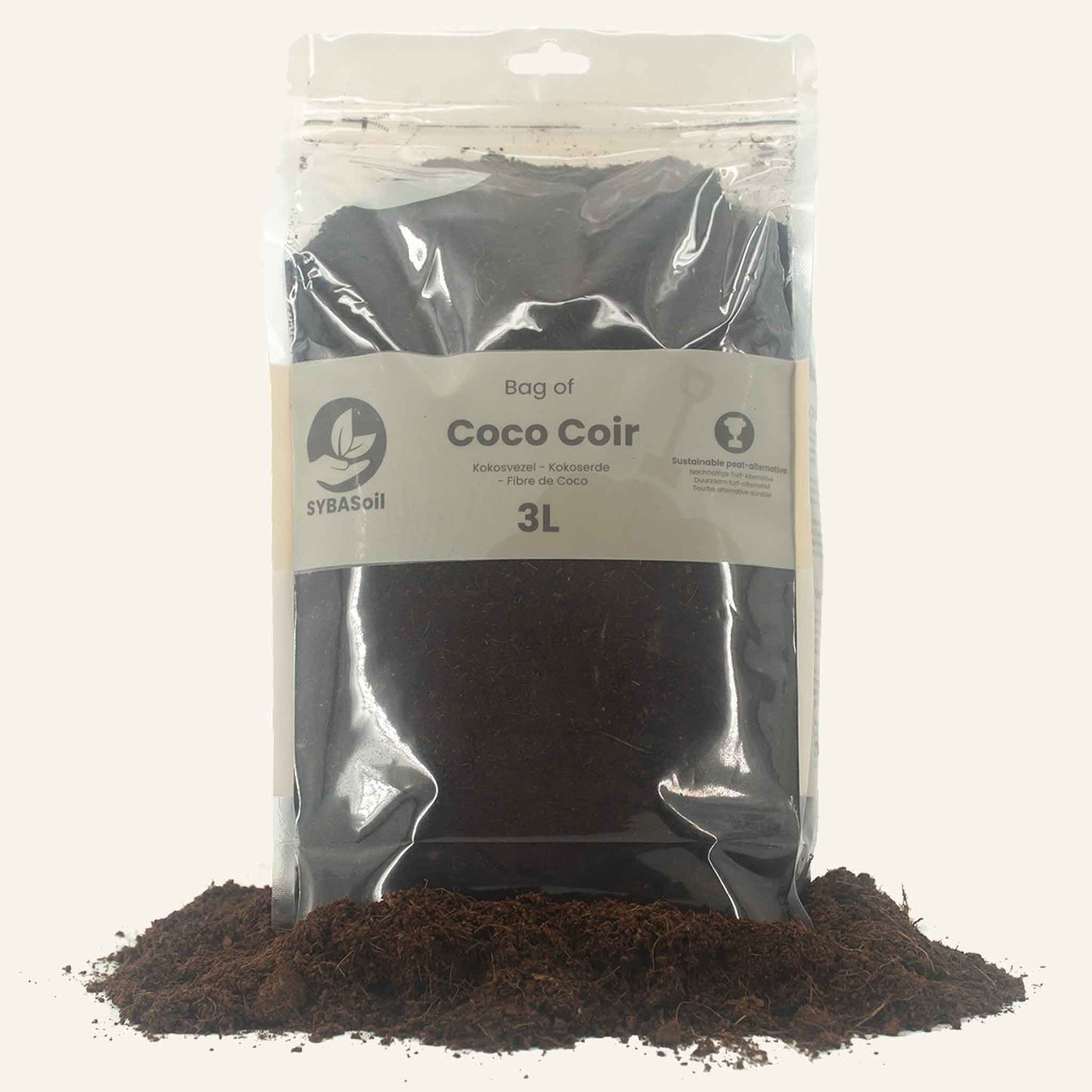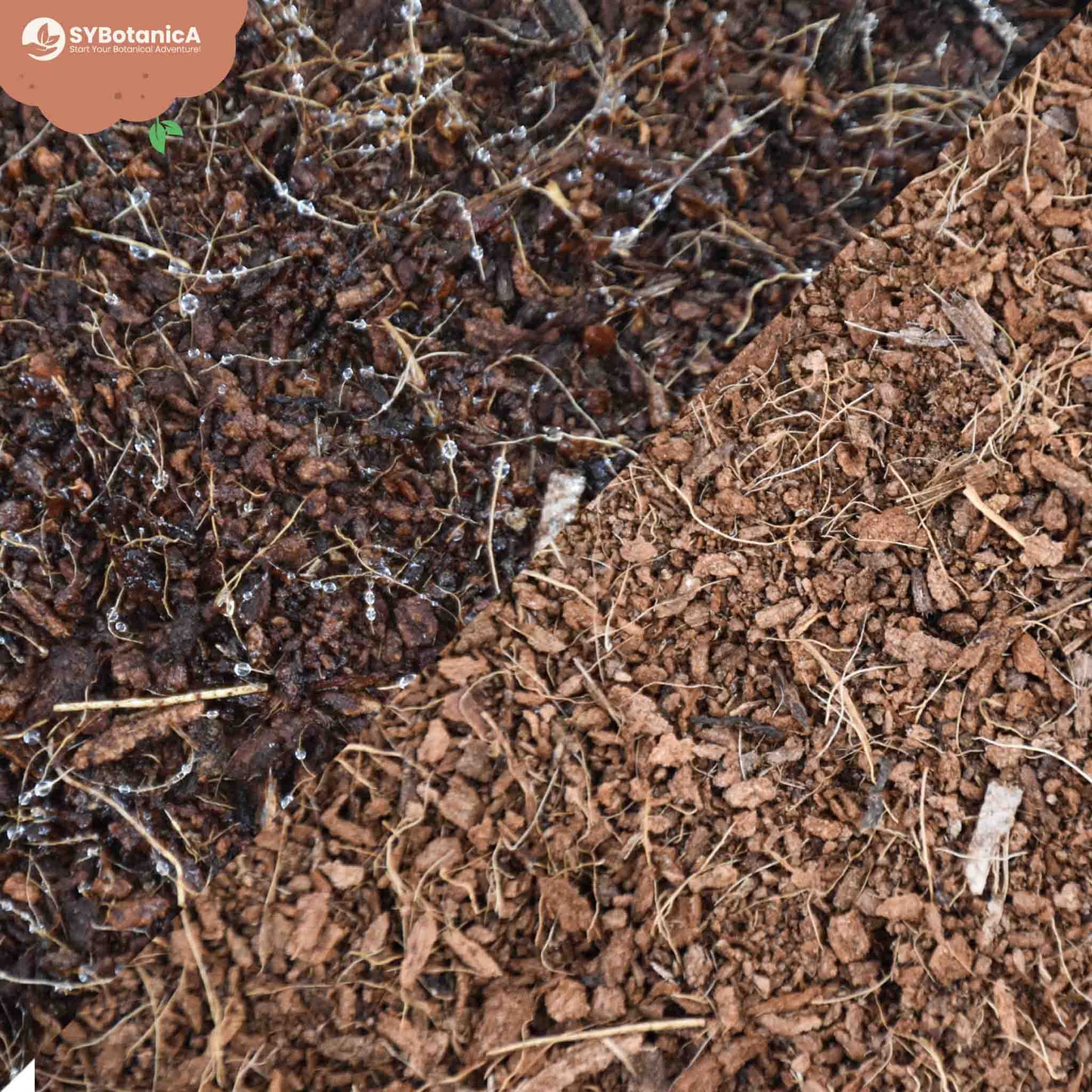
SYBASoil: Premium Soil Mixes
Handmixed coconut-based soil blends for your plants. Give your plants the soil...

Handmixed coconut-based soil blends for your plants. Give your plants the soil...
€0,00 EUR
Order before 16:30 on working days = Shipped today
100% Satisfaction Guarantee
The expert in soil
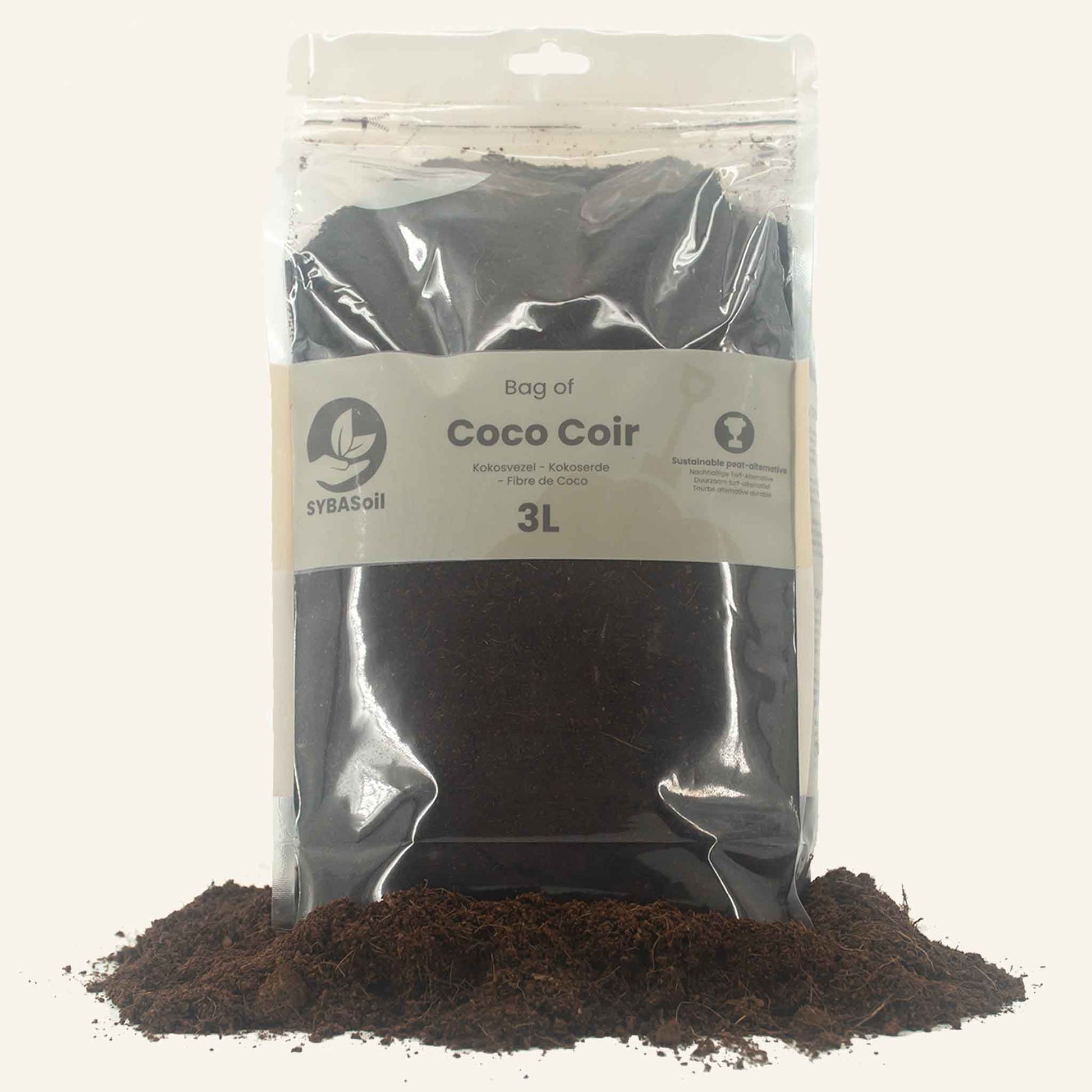

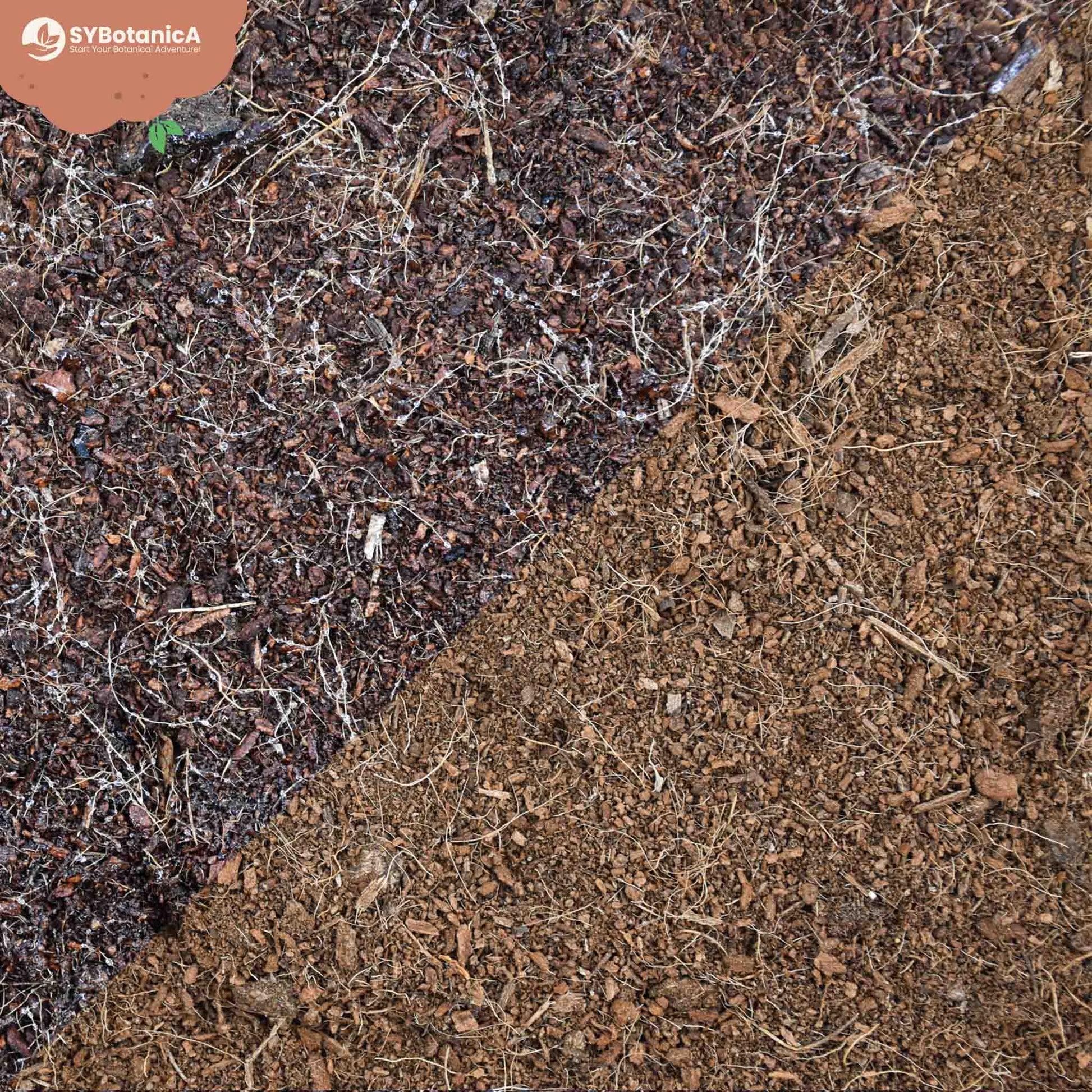
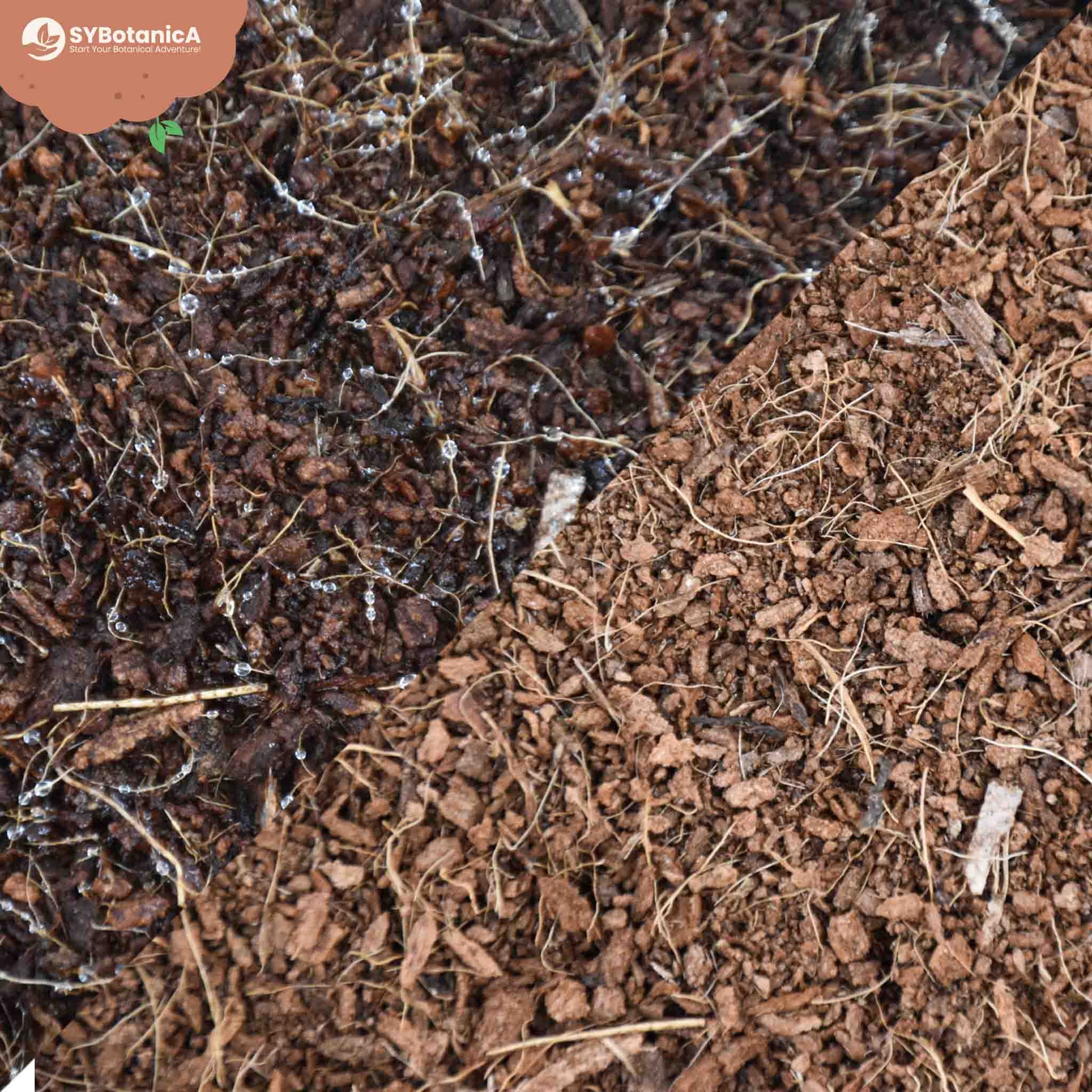
Coco coir is a great base to any soil mix, and has earned itself a spot in all of our SYBASoil mixes. It holds moisture well without becoming too wet and will increase aeration because of its structure.
Our coco coir is ready to use and comes in convenient bags, unlike most coco blocks which have to be hydrated and kneaded by hand before being usable. ![]() Ecological choice compared to peat moss
Ecological choice compared to peat moss![]() Salt-free
Salt-free![]() Combination of drainage AND water retention
Combination of drainage AND water retention![]() Perfect for propagation
Perfect for propagation
Coco coir v.s. peat moss
While coco coir and peat moss share many of the same characteristics. Peat is not a sustainable resource and lots of CO2 is released by extracting it from the land. The coir is harvested from the shell of coconuts and is a waste product from other industries like the food branch. By utilizing this waste stream we are not only preventing unnecessary carbon emission from harvesting peat, we are also using waste products.
Salt-free
Coco coir, also known as coco fibre, usually has to be buffered before use. This means it has to be placed in a buffer solution to remove salt-buildup naturally present in coconut husk. This process has already been done for you so you use the coir immediately on arrival.
Looking for a chunkier alternative? Have a look at our coco husk.
| Value's (EN) | Coco Coir |
|---|---|
| Country of Origin | Sri Lanka |
| Suitable for organic farming | yes |
| Structural stability | Up to 4 years, depending watering and what other components it is mixed with |
| EC | < 0,4 mS/cm |
| pH | 5,5 - 7 |
| Safe for pets? | pet safe |
| Organic matter % | >80 % by weight |
| Water retention capacity % | <85 % by weight |
Premium SYBASoil
*30L bags are temporarily shipped in plain bags due to high demand!
In stock
Couldn't load pickup availability
100% Satisfaction Guarantee Or Your Money Back!
Socially responsible production
Coco coir is a great base to any soil mix, and has earned itself a spot in all of our SYBASoil mixes. It holds moisture well without becoming too wet and will increase aeration because of its structure.
Our coco coir is ready to use and comes in convenient bags, unlike most coco blocks which have to be hydrated and kneaded by hand before being usable. ![]() Ecological choice compared to peat moss
Ecological choice compared to peat moss![]() Salt-free
Salt-free![]() Combination of drainage AND water retention
Combination of drainage AND water retention![]() Perfect for propagation
Perfect for propagation
Coco coir v.s. peat moss
While coco coir and peat moss share many of the same characteristics. Peat is not a sustainable resource and lots of CO2 is released by extracting it from the land. The coir is harvested from the shell of coconuts and is a waste product from other industries like the food branch. By utilizing this waste stream we are not only preventing unnecessary carbon emission from harvesting peat, we are also using waste products.
Salt-free
Coco coir, also known as coco fibre, usually has to be buffered before use. This means it has to be placed in a buffer solution to remove salt-buildup naturally present in coconut husk. This process has already been done for you so you use the coir immediately on arrival.
Looking for a chunkier alternative? Have a look at our coco husk.
| Value's (EN) | Coco Coir |
|---|---|
| Country of Origin | Sri Lanka |
| Suitable for organic farming | yes |
| Structural stability | Up to 4 years, depending watering and what other components it is mixed with |
| EC | < 0,4 mS/cm |
| pH | 5,5 - 7 |
| Safe for pets? | pet safe |
| Organic matter % | >80 % by weight |
| Water retention capacity % | <85 % by weight |
Can I use coco coir in a terrarium?
You can use coco coir as a terrarium substrate. Mix it with some sphagnum moss and coco husk or orchid bark. You can also get our ready-made Terrarium Mix.
Coco coir as a terrarium backdrop.
To use coco coir as a backdrop, start by creating a back wall of PU foam and silicone. Press the coco coir against the silicone until it forms a solid layer and let it dry out.
Repeat this process until you have a nice backdrop. The coir is safe for reptiles and other terrarium animals. It will hold moisture, creating a perfect environment.
Is this coco coir free from salts and ready to use?
Coconut trees naturally contain high levels of salt as they grow in coastal areas. Coco coir must be fully rinsed, washed, and buffered before use for growing plants.
Our coco coir has already gone through this process and is ready-to-use!
Can coco coir be reused?
Yes, you can reuse your coco coir. However, you need to clean it between uses to prevent any mineral or salt buildup from forming in your soil.
A thorough rinsing should do the trick to remove salt residue in the coir.
Then, add a fertilizer with calcium and micronutrients to replenish the coir's nutrients. After this process, allow your coco coir to dry fully.
It's also recommended to check your coco coir for pests or bugs before re-using.
If you find any critters in your coir, it is best to avoid reusing it for your plants.
Difference between peat moss and coco coir?
Peat moss is made from peat bogs, which consist of decomposed sphagnum. It's loved for its high nutrient content and water-retentive abilities.
However, it is very unsustainable. Peat moss takes years to regrow. Harvesting it causes high CO2 emissions.
This is where coco coir poses a better alternative. It retains water like peat; however, it is eco-friendly.
Coco coir is a byproduct of the coconut industry, which means its emissions are far less compared to peat.
There is still a large transport emission as it comes from countries like Sri Lanka.
We are testing alternatives to find a perfect, futureproof replacement. However, this is harder than we thought.
Have a different question? Get in contact
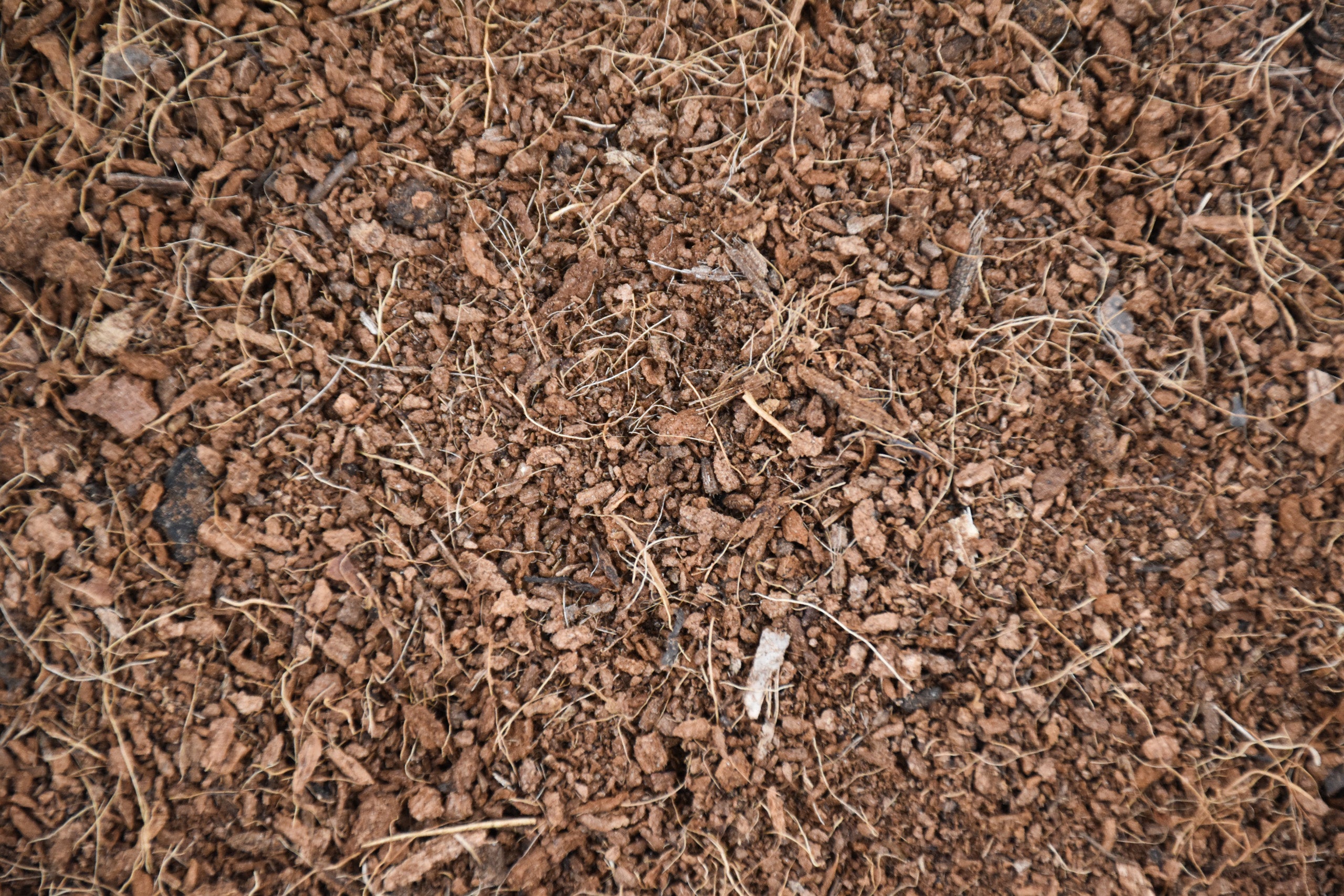
Why Coco Coir for your plants?
Ready to use (buffered) peat alternative
Add 10-50% as the base of a new soil mix
Almost all houseplants
Buffered and ready to use.
Washed with natural rainwater from a certified farm.
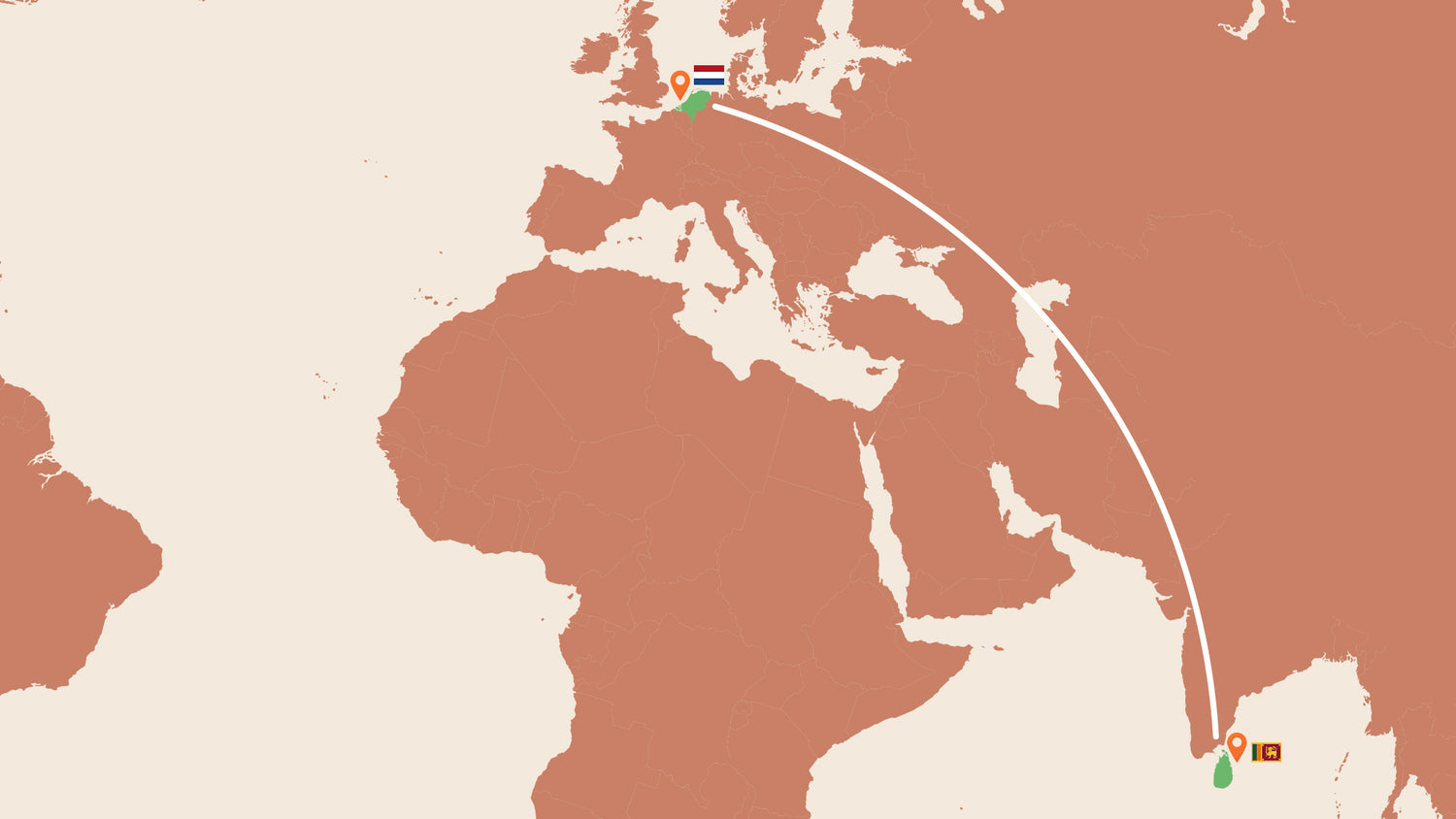
Our coco coir comes from a certified (RHP/ECAS) farm in Sri Lanka ensuring:
- Fairly paid workers (which sadly isn't always the case for this product)
- A quality product, washed & cleaned with natural rainwater (so there is no clean water waste).
The supply chain is currently longer than we would like it to be. But we're working hard at finding a replacement for Coco Coir and Coconut Husk Chips with similar qualities as these materials.
We are running multiple tests with Wageningen University to find a suitable alternative. But we haven't found a winner yet.
Order before 16:30 on working days = Shipped today
The expert in soil
